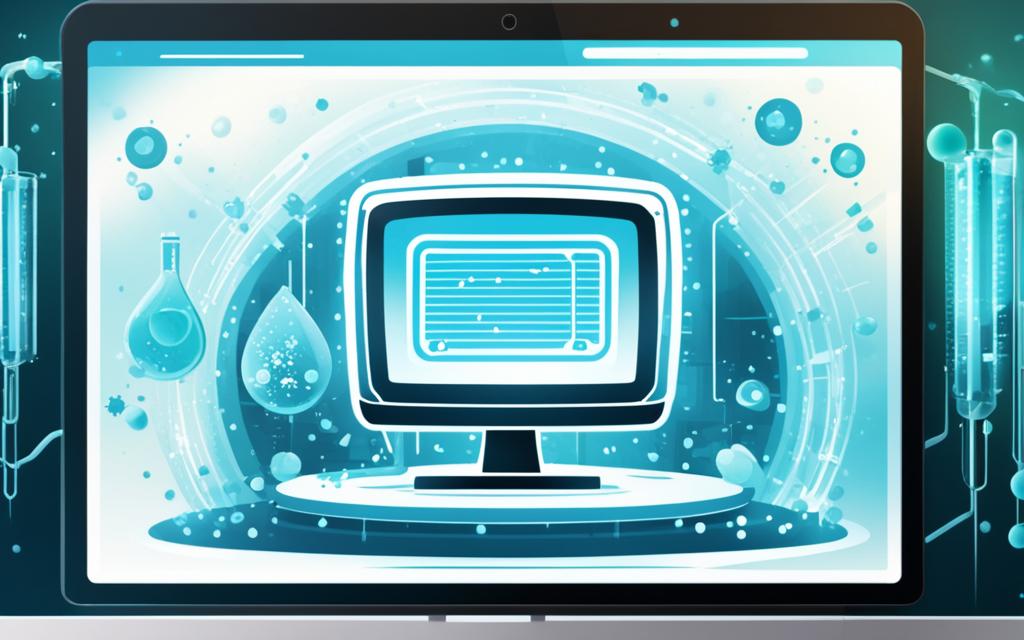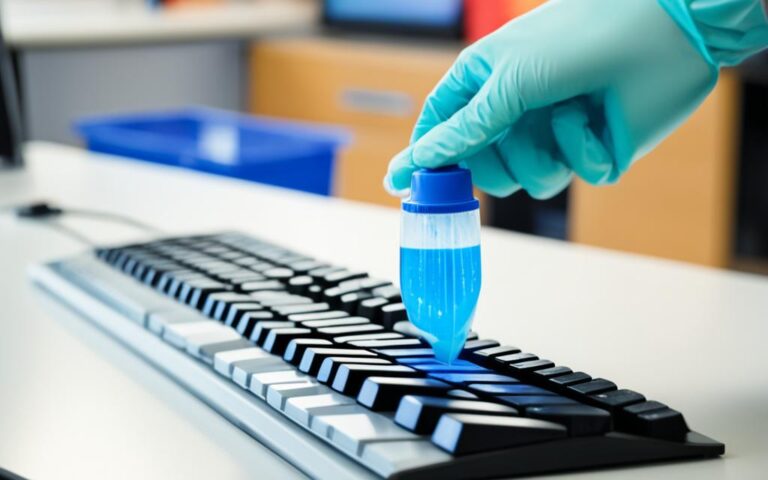The Role of Computer Disinfection in Cybersecurity
Computer disinfection plays a critical role in bolstering cybersecurity measures to protect digital assets and ensure data integrity. In today’s interconnected world, where organizations rely heavily on technology, the threat of malware and cyber-attacks is ever-present. Computer disinfection involves implementing a set of rules and procedures to clear, neutralize, or eliminate malware threats and restore the security and integrity of computer devices, networks, and information systems.
Malware can pose significant risks to organizations, including unauthorized access, data breaches, and financial losses. It can compromise the confidentiality, availability, and the overall functionality of digital assets. To combat these threats effectively, a robust disinfection protocol is essential.
The first step in a disinfection protocol is to identify the presence of malware through the use of antivirus or anti-malware tools. Timely detection is crucial for minimizing the impact of a potential attack and protecting sensitive information. Once malware is identified, it is important to halt its activity, isolate affected systems or devices, and develop a response plan to secure system backups for successful recovery.
System restoration, or the “cleaning” stage, may involve the deletion of malware components or, in advanced cases, a full system wipe or hardware replacement. It is essential to regularly update antivirus software and stay current with emerging trends in malware. Additionally, training and awareness development for employees on good practices contribute to a comprehensive disinfection protocol.
By prioritizing computer disinfection, organizations can safeguard their digital assets, maintain data integrity, and bolster their overall cybersecurity posture. With evolving cyber threats, a proactive and vigilant approach to computer disinfection is crucial in minimizing risks and ensuring the smooth functioning of organizations.
Understanding Malware Persistence and Disinfection
Malware persistence refers to the ability of malware to maintain a presence on a compromised system over an extended period. To effectively combat malware, it is crucial to understand the various persistence mechanisms employed by malicious actors.
Common methods of malware persistence include:
- Registry entries: Malware often adds registry entries to ensure its execution on system startup.
- Startup folder: By placing malicious files in the startup folder, malware ensures that it runs every time the system boots up.
- Service installation: Some malware disguises itself as a system service, making it difficult to detect and remove.
- Scheduled tasks: Malicious code can schedule tasks to run at specific times, allowing the malware to persistently operate in the background.
- DLL injection: Malware may inject itself into legitimate processes to evade detection and maintain persistence.
- Boot sector infection: In rare cases, malware can infect the boot sector of a system, making it even more challenging to remove.
Detecting malware persistence requires the use of robust antivirus or anti-malware tools. Monitoring startup locations, registry entries, and system logs for unusual behavior can help identify persistent malware.
Disinfection involves a series of fundamental steps:
- Identify and isolate the infected system to prevent further spread of the malware.
- Perform thorough scans to identify malicious files and processes.
- Remove identified malware to neutralize its impact.
- Disable malicious services and scheduled tasks to prevent the malware from reactivating.
- Clean up the registry, removing any malicious entries left behind by the malware.
- Patch and update the system to address vulnerabilities that may have been exploited by the malware.
Education and Prevention
In addition to disinfection efforts, user education plays a crucial role in preventing and combating malware infections. By promoting safe computing practices, organizations can minimize the risk of malware infiltrating their systems.
“Prevention is better than cure.” – Anonymous
By understanding malware persistence and implementing proactive disinfection practices, organizations can strengthen their cybersecurity defenses and safeguard their digital assets.
Steps for Performing a Disinfection Protocol in Cybersecurity
Performing a disinfection protocol in cybersecurity involves several important steps. These steps are crucial in effectively removing malware, securing infected devices, and restoring system integrity. To ensure a comprehensive disinfection process, follow the steps below:
- Disconnect Infected Devices: When dealing with infected devices, it is crucial to disconnect them from the network to prevent further spread of the malware.
- Run Antivirus Software and Perform System Scans: Use updated antivirus software to scan the infected devices and identify the presence of malware. Perform thorough system scans to detect any hidden or disguised malware.
- Keep Security Patches Up to Date: Regularly update security patches for the operating system and installed software. These patches address vulnerabilities that malware may exploit.
- Monitor Network Activity: Continuously monitor network activity to ensure complete removal of the infection. Any suspicious or unauthorized network activity should be investigated.
- Clean Infected Files and Disable Malicious Services: Identify and clean infected files by removing or quarantining them. Disable any malicious services running on the infected devices to prevent further harm.
- Perform Registry Cleanup: Clean up the system’s registry by removing any suspicious or malicious entries added by the malware.
- Recovery and Restoration: Restore critical system files from secure backups and revert to clean restore points to ensure system stability and security.
- Patch and Update: Install the latest patches and updates for the operating system and installed software to address vulnerabilities exploited by the malware.
- Security Auditing: Conduct a thorough security audit of the system to identify any weaknesses or vulnerabilities that may have allowed the malware to infect the system.
- User Education: Educate users about safe computing practices to prevent future malware infections. Promote awareness of potential risks and provide guidance on identifying and avoiding malicious activities.
- Monitor and Report: Continuously monitor the system for signs of re-infection. Report any unusual activities or incidents to facilitate further analysis and enhance the overall cybersecurity strategy.
By following these steps, organizations can effectively perform a disinfection protocol that mitigates the impact of malware, enhances system security, and protects valuable digital assets.
Reinstalling Your Compromised Computer for Effective Disinfection
In situations where a computer has been compromised, reinstalling the operating system is often necessary to achieve effective disinfection. By following a systematic approach, users can ensure that their computer is thoroughly cleaned and restored to a secure state.
Ensuring Up-to-Date Antivirus Software
Prior to reinstalling the operating system, it is crucial to ensure that antivirus software is up to date. This helps to maximize the effectiveness of the disinfection process, providing an added layer of protection against malicious threats.
Rebooting Into Safe Mode and Conducting Virus Scans
Rebooting the computer into safe mode allows for a comprehensive virus scan and the deletion of temporary files. This step helps identify and eliminate any lingering malware that may have evaded detection.
Identifying and Removing Malicious Files and Processes
During the disinfection process, it’s important to identify and remove any malicious files and processes that may have been introduced to the system. This includes disabling malicious services and scheduled tasks to prevent them from reactivating.
Performing Registry Cleanup and Restoring Critical System Files
Registry cleanup is an essential step in the disinfection process. By removing any malicious entries and restoring the registry to its original state, users can eliminate potential vulnerabilities and ensure system stability.
Patching and Updating the Operating System
Addressing vulnerabilities in the operating system is crucial to prevent future infections. Users should patch and update the operating system and any installed software to ensure the latest security fixes are in place.
Security Auditing and User Education
Following the disinfection process, security auditing can help identify any weaknesses in the system that may have allowed for the initial compromise. Educating users about safe computing practices is vital to prevent future infections.
Continuous Monitoring and Reporting
Monitoring the system for any signs of re-infection is essential to maintain a secure environment. Users should report any incidents for further analysis, aiding in the identification and mitigation of potential threats.
By following these steps and reinstalling the operating system, users can effectively disinfect their compromised computers, ensuring the removal of malware and restoring the security of their systems.
Importance of Disinfection Protocol Frequency in Cybersecurity
In the ever-evolving landscape of cybersecurity, the frequency of performing a disinfection protocol plays a vital role in safeguarding networks and systems from malicious threats. The level of risk and network activity are key factors determining how often organizations should conduct regular system scans and disinfection protocols, aiming to maintain the highest level of network security and protect sensitive digital assets.
Regular system scans, ideally scheduled on a daily or weekly basis, serve as proactive measures to identify potential infections and prevent their spread. By continuously monitoring network activity and conducting thorough scans, organizations can detect and address emerging threats even in the absence of apparent issues. This approach ensures that no potential risks go unnoticed, fortifying the security of both secure and infected systems.
Integrating a regular disinfection protocol frequency into a comprehensive cybersecurity strategy is essential for staying one step ahead of cybercriminals. By identifying and addressing threats promptly, organizations can significantly reduce the severity and impact of potential breaches. This preventative approach not only minimizes the risk of data compromise but also fosters a culture of proactive risk management.
Table: Frequency of Disinfection Protocols
| Frequency | Benefits |
|---|---|
| Daily | – Immediate identification and containment of emerging threats – Rapid response to potential breaches – Ensuring ongoing network security |
| Weekly | – Comprehensive system scans to detect and remove malware – Regular evaluation of network security – Enhanced protection against evolving cyber threats |
| Monthly | – System-wide analysis of vulnerabilities – Thorough assessment of network activity – Maintaining a strong cybersecurity posture |
By following a regular disinfection protocol frequency, organizations can proactively combat potential malware threats and bolster their overall cybersecurity posture. This approach ensures that networks and systems remain secure, minimizing the risk of data breaches and unauthorized access. It is crucial to remember that a strong disinfection protocol is not just a reaction to a specific incident but an integral part of a comprehensive cybersecurity strategy.
Conclusion
Computer disinfection plays a crucial role in cybersecurity, safeguarding digital assets and ensuring data security. A well-defined disinfection protocol is essential to identify and remove malware, halt its activity, isolate affected systems, and restore the security and integrity of networks and systems. Regular system scans, updated antivirus software, and vigilant monitoring of network activity are crucial for maintaining a secure environment.
In cases of persistent malware, reinstalling the operating system and following proper disinfection procedures are necessary steps to eliminate the threat. Additionally, patching and updating the system, conducting regular security audits, and educating users on safe computing practices are vital components of a comprehensive disinfection protocol.
By implementing a robust disinfection protocol, organizations can proactively combat malware, protect their digital assets, and enhance their cybersecurity defenses. Maintaining a secure environment is paramount in today’s digitally interconnected world, and computer disinfection serves as a crucial line of defense against cyber threats.












